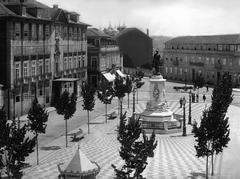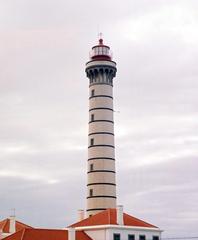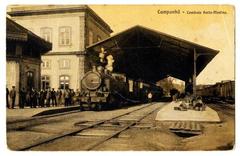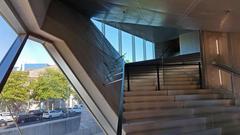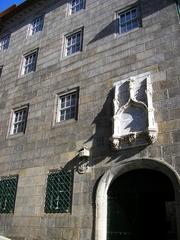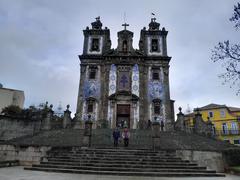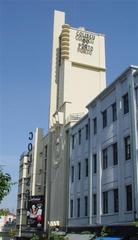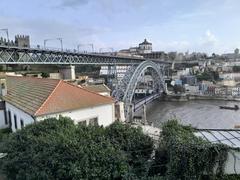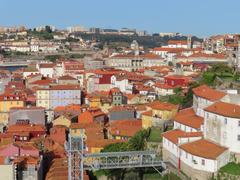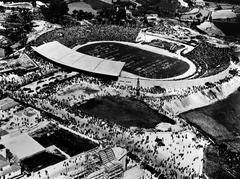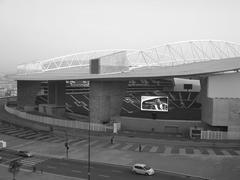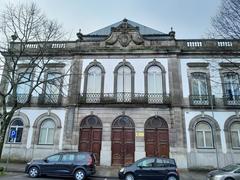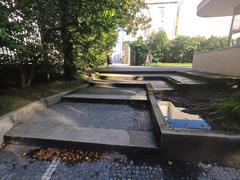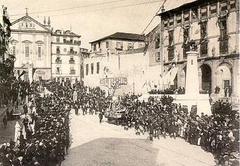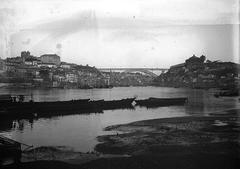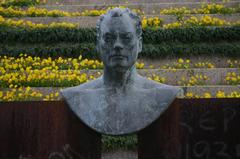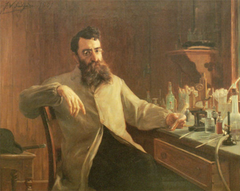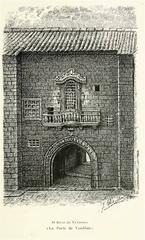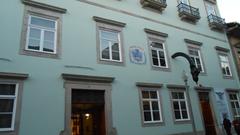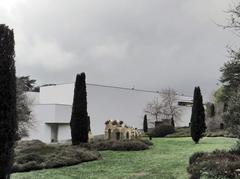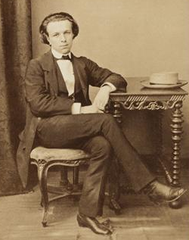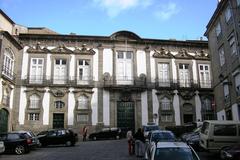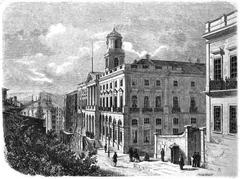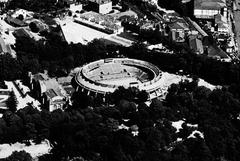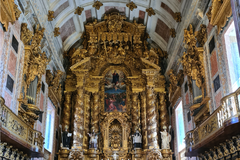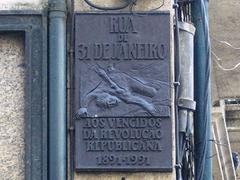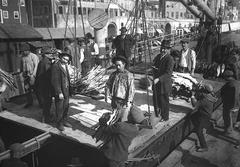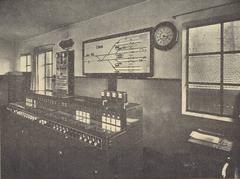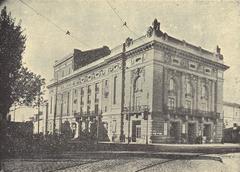Visiting Forte de São Francisco Xavier: History, Tickets, and Tips
Date: 18/07/2024
Introduction
Table of Contents
- [History of Forte de São Francisco Xavier](#history-of-forte-de-são-francisco-xavierhistory-of-forte-de-são-francisco-xavier)
- [A Bastion Against Spanish Incursions](#a-bastion-against-spanish-incursionsa-bastion-against-spanish-incursions)
- [Early Fortifications and the Reconquista](#early-fortifications-and-the-reconquistaearly-fortifications-and-the-reconquista)
- [The 16th Century - Growing Tensions and the Need for a Stronger Defense](#the-16th-century---growing-tensions-and-the-need-for-a-stronger-defensethe-16th-century-growing-tensions-and-the-need-for-a-stronger-defense)
- [The Birth of Forte de São Francisco Xavier - A Fortress Rises from the Rock](#the-birth-of-forte-de-são-francisco-xavier---a-fortress-rises-from-the-rockthe-birth-of-forte-de-são-francisco-xavier-a-fortress-rises-from-the-rock)
- [17th and 18th Centuries - Guarding the Douro and Witnessing History](#17th-and-18th-centuries---guarding-the-douro-and-witnessing-history17th-and-18th-centuries-guarding-the-douro-and-witnessing-history)
- [19th Century - From Fortress to Prison and Back](#19th-century---from-fortress-to-prison-and-back19th-century-from-fortress-to-prison-and-back)
- [20th Century - Restoration and Recognition](#20th-century---restoration-and-recognition20th-century-restoration-and-recognition)
- [21st Century - A Beloved Landmark and Tourist Destination](#21st-century---a-beloved-landmark-and-tourist-destination21st-century-a-beloved-landmark-and-tourist-destination)
- [Visitor Information](#visitor-informationvisitor-information)
- [Visiting Hours](#visiting-hoursvisiting-hours)
- [Tickets](#ticketstickets)
- [Accessibility](#accessibilityaccessibility)
- [Guided Tours](#guided-toursguided-tours)
- [Special Events](#special-eventsspecial-events)
- [Photographic Spots](#photographic-spotsphotographic-spots)
- [Nearby Attractions](#nearby-attractionsnearby-attractions)
- [Porto Historical Sites](#porto-historical-sitesporto-historical-sites)
- [Beaches](#beachesbeaches)
- [Dining](#diningdining)
- [FAQ](#faqfaq)
- [Conclusion](#conclusionconclusion)
- [References](#referencesreferences)
History of Forte de São Francisco Xavier
A Bastion Against Spanish Incursions
Forte de São Francisco Xavier, more affectionately known as Castelo do Queijo (Cheese Castle), is steeped in history, its origins intertwined with the defense of Porto and the shaping of Portugal’s destiny.
Early Fortifications and the Reconquista
While the current fort dates back to the 17th century, the site itself boasts a much longer history of fortification. Some historians believe that a Roman settlement once occupied the rocky islet where the fort stands today. This strategic location, guarding the mouth of the Douro River, made it a natural choice for defense. During the Reconquista, the Christian reconquest of the Iberian Peninsula from the Moors, the site likely housed a small fortification. Although concrete evidence is scarce, historical records from the 11th and 12th centuries mention a “Castelo da Foz” (Castle of the Mouth) in the vicinity, suggesting an early defensive structure.
The 16th Century - Growing Tensions and the Need for a Stronger Defense
By the 16th century, Portugal’s maritime power was growing, and with it, the importance of defending its coastal cities. Porto, a vital port for trade and exploration, became increasingly vulnerable to attacks from privateers and rival European powers, particularly Spain. The existing defenses at the mouth of the Douro, likely rudimentary structures, proved inadequate. The need for a more robust fortification became increasingly apparent, especially during the period of the Iberian Union (1580-1640) when Portugal and Spain were united under the Spanish crown.
The Birth of Forte de São Francisco Xavier - A Fortress Rises from the Rock
In 1661, shortly after the Portuguese Restoration War (1640-1668) that ended the Iberian Union, King John IV commissioned the construction of a modern fort on the site. Designed by the French military engineer Miguel de l’Ècole, the fort was conceived as a key element in Porto’s coastal defense system. The fort’s design reflected the latest military architectural trends of the time, incorporating bastions, ramparts, and a moat to withstand artillery bombardment. Its strategic location, overlooking the Douro River and the Atlantic Ocean, allowed for a wide field of fire, making it a formidable obstacle for any potential attacker.
17th and 18th Centuries - Guarding the Douro and Witnessing History
Throughout the 17th and 18th centuries, Forte de São Francisco Xavier played a crucial role in safeguarding Porto’s harbor. It successfully repelled several Spanish attacks, most notably during the War of the Spanish Succession (1701-1714). The fort also served as a customs post, controlling the flow of goods and people in and out of the Douro River. Its strategic importance extended beyond military defense, contributing to the economic prosperity of Porto.
19th Century - From Fortress to Prison and Back
The 19th century brought significant changes to the fort’s role. With the decline of maritime warfare and the advent of new military technologies, Forte de São Francisco Xavier lost its strategic importance. It was briefly used as a political prison during the Liberal Wars (1828-1834) that pitted liberal forces against absolutists in Portugal. Later in the century, the fort was decommissioned as a military installation and fell into disrepair. However, its historical and architectural significance did not go unnoticed.
20th Century - Restoration and Recognition
In the early 20th century, efforts began to restore Forte de São Francisco Xavier and preserve it as a historical monument. The fort underwent extensive renovations, and in 1939, it was classified as a Property of Public Interest. During the mid-20th century, the fort housed a military museum, showcasing artifacts and exhibits related to Porto’s military history. This further cemented its status as a significant cultural landmark.
21st Century - A Beloved Landmark and Tourist Destination
Today, Forte de São Francisco Xavier stands as a proud testament to Porto’s rich history. Its distinctive silhouette, perched atop the rocky outcrop, is an iconic image of the city. The fort is open to the public, offering visitors breathtaking views of the Atlantic Ocean, the Douro River, and the city skyline. Within its walls, visitors can explore the fort’s well-preserved architecture, including its bastions, ramparts, and cannons. Information panels and exhibits provide insights into the fort’s history, its role in defending Porto, and its evolution over the centuries.
Visitor Information
Visiting Hours
Forte de São Francisco Xavier is open daily from 10:00 AM to 6:00 PM. It is closed on national holidays.
Tickets
Entry tickets can be purchased at the entrance. Prices are as follows:
- Adults: €3
- Children (under 12): Free
- Students and Seniors: €1.50
Accessibility
The fort has ramps and pathways to accommodate visitors with mobility issues.
Guided Tours
Available upon request. Contact the fort’s administration for more details.
Special Events
Photographic Spots
Capture stunning views from the bastions and ramparts. The sunset over the Atlantic Ocean is particularly picturesque.
Nearby Attractions
Porto Historical Sites
Don’t miss other nearby historical sites such as the Church of São Francisco, Porto Cathedral, and the Ribeira district.
Beaches
Matosinhos Beach is a short walk away, offering a perfect spot for relaxation after your visit to the fort.
Dining
Enjoy local cuisine at the nearby seafood restaurants in the Matosinhos area.
FAQ
Q: What are the visiting hours for Forte de São Francisco Xavier?
A: The fort is open daily from 10:00 AM to 6:00 PM, and closed on national holidays.
Q: How much are the tickets for Castelo do Queijo?
A: Tickets are priced at €3 for adults, €1.50 for students and seniors, and free for children under 12.
Q: Is the fort accessible for visitors with mobility issues?
A: Yes, the fort has ramps and pathways to accommodate visitors with mobility issues.
